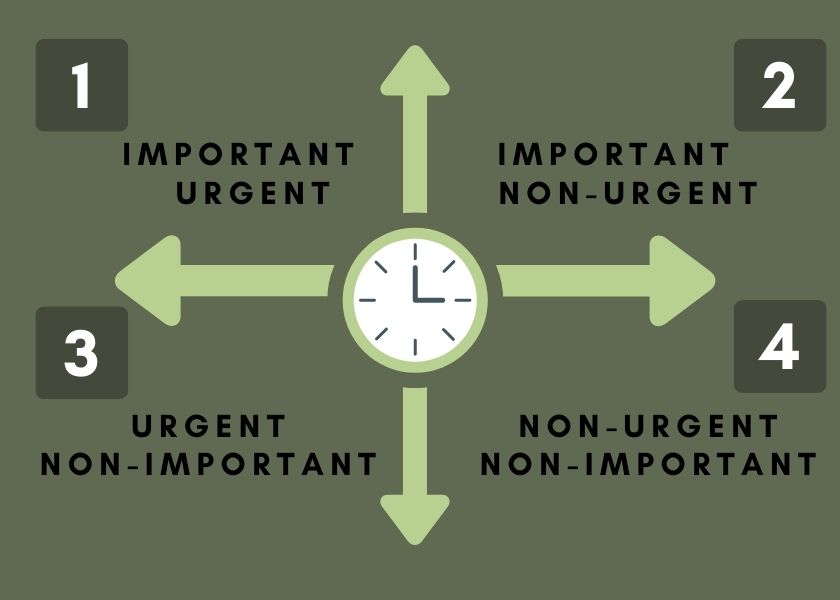Here's a Sign Your Management Team Isn’t On It’s ‘A Game’

Take a look at your operation. Is just one person doing all the work? While it might seem that way at times, the answer is most likely “no.”
“Great things in business are never done by one person. They are done by a team of people,” says Liz Griffiths, a human-resource consultant in market development for Encore Consultants. “But the important part is that that team needs to be effective.”
Utilizing an effective management team can help you. As the owner or leader of your business, spend less time on the non-urgent and non-important tasks or duties that pop up every day. It provides you with an opportunity to share some of the responsibility and delegate those tasks to your management team. But in order to spend more time on the important tasks, you first must understand where you’re currently spending your time.
Where Are You Spending Your Time?

According to Griffiths, our tasks can be split into four different categories – Important urgent, important non-urgent, urgent non-important and non-urgent non-important.
Important Urgent
“Most of us default to doing the urgent tasks first,” Griffith says. “The problem is if that’s all you’re doing, you’re not able to accomplish the important tasks.”
Important urgent are the tasks that need your immediate attention and cannot be delayed. No matter how much you plan ahead and avoid procrastination, crisis will still pop up. To combat these time suckers, Griffith suggests leaving some time in your schedule to handle unexpected issues.
Important Non-Urgent
According to Griffith, you need to spend the majority of your time on important but non-urgent tasks as they assist with the long-term planning and strategy for your business.
“These are the activities that help you achieve your personal and professional goals and complete the important work that you need to do,” Griffith says. “You need to make sure that you have plenty of time to do these tasks, so they don’t become urgent.”
Urgent Non-Important
“Distractions are urgent but not very important,” Griffith says. “These activities on a daily basis may even be somewhat enjoyable, but these activities are things that stop you from achieving your goals and prevent you from completing the important work.”
Take the time to ask yourself, “Can someone else be doing this? Can someone else assist me so I can get on to the more important goals of my business?”
As the owner of leader of your business, you most likely experience your fair share of interruptions throughout the day. Employees come to you to complain, others enjoy too much small talk and by the end of the day, you wonder where all of your time has gone.
“It’s great to have an open-door policy and you should,” Griffith says. “But in order to get your tasks done, especially the important non-urgent tasks, you need to set aside specific time for that.”
Non-Urgent Non-Important
“These are literally activities with little or no value to your long-term or short-term success,” Griffith notes. “They’re just a distraction and most of the could probably just be avoided.”
If you are spending the majority of your time in quadrants one, three and four, maybe you need to reevaluate your management team.
Identify Your Team
After you’ve discovered where the majority of your time is going, it’s time to identify the team members who can help you accomplish your goals.
“Not everybody should be on your management team,” Griffith says. “Just because they are family doesn’t make it automatic that they are on your management team.”
According to Griffiths, one of the first things you should think about is if these people share the same core values as your business. You want to make sure you have the right people with the right values. These values will determine how you and your employees will run the farm to meet your vision and your mission. They set the principles, values and provide a moral compass for your people and can help you decide the right course of action, establish a basis for decision making and give you some guidance on hiring, rewarding, discipling and even firing employees.
“Some people are not team players and they don’t want to be involved, and that’s okay! You still need those employees, but you don’t need them on your management team because they aren’t going to help move your business forward,” Griffith explains.
G.W.C.
When adding a member to your management team, it’s important to make sure they have these basic qualities:
- Get it – They understand what you’re talking about when you explain an idea, a change to procedure or goal and follow up by doing the job right. They train other and lead by example.
- Want it – Does he or she genuinely want a seat on the management team? They must understand and embrace the goals of the business and are willing take the steps to achieve those goals.
- Capacity - Does he or she have the mental, physical, spiritual and emotional capacity to do this job? Additionally, do they have the time and the knowledge to get it done right?
“Before you give anybody a seat on the management team, he or she must get it, want it, and have the capacity to do the job,” Griffith says. “If any one of those three is a no, it’s never going to work.”
Your team should be composed of solid team members who embrace your core values, communicate effectively, are willing to develop and achieve your goals and have the ability to lead others. If you can identify these people, you may be able to add a few more hours to your day.
“Why not share the workload? Why not encourage ideas and innovation? Why not improve morale?” Griffith asks. “Why not complete all the tasks more effectively, leaving you some time to focus on the business. An effective management team can be a really useful tool for you and your business.”







